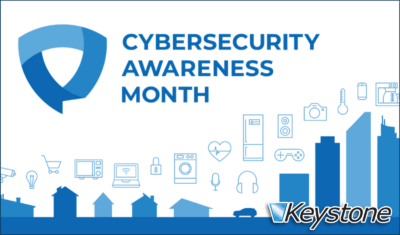In this time of concern about health and contact with others as a response to the Covid-19 (Coronavirus) pandemic, many are facing working at home for an extended period. We enjoy high connectivity and tend to work when not in the office, but it is often limited to checking our email on the phone, or perhaps an occasional day at home. But it is different between “getting” to work at home for a day and being forced to indefinitely. To prepare for remote work for the next few weeks, consider the following tips. With good habits, you will likely find you are more productive, but potentially less satisfied; these should help.
I have worked at home a lot and can share my perspective. At one point, I worked at home every day for about three years in 1996-1998 before the internet. I have consistently worked at home since then. It can be great and can be a problem, so let me share a few personal tips.
- Establish boundaries of time and space; don’t let personal and work pool into one another. Co-workers make jokes about “working” from home, with a wink, but the threat for those who enjoy what they do is that it will begin to take over the entire day. When I worked at home in the 90s, I quickly found that if nothing was going on in the evening with family, I migrated back to the home office and picked up where I left off, which often resulted in my return to the rest of the house now dark and with everybody sleeping; this is not healthy for family life. I encourage you to do two things.
- Have a specific area that is for work and keep it that way. Set up on the dining room table or spare bedroom and work When you complete the day, shut things down and walk away. When you need to work, be there.
- Establish rigid work hours – Get up and get ready and start on time; not 1 minute late. Prepare and dress like you are going to the office as much as possible. Finish on time and ring a bell or knock on the wall; the workday is complete!
- If you have a family at home, particularly small children, you may not be able to work the standard 8:00 am – 5:00 pm hours but should still create a schedule you can hold as much as possible. You may have to start earlier, then stop for a bit to make breakfast for the little angels, and get them on a plan for the day, and then go back to work for a bit, etc. You will find that breakfast time to be precious, so don’t gloss over the great talks you can have but do have a way to get back to work when needed. You may have more interruptions later, so review your space and schedule to take advantage of the times when you can do deep work uninterrupted (infant nap times, etc.). Make it work for you and communicate your schedule to others (Additional tips for work at home parents).
- Have a plan for the day. Create a list of tasks, scheduled calls, and online meetings. The best time to do it is the night before; it is a gift to your future self, so you do not become overwhelmed as soon as you start. Nothing can be more challenging than an open day with what feels like a lot to do, so plan. Use applications like Microsoft Outlook for tasks, or check out Todoist or TickTick. Schedule the day first with the necessary calls or online meetings, and fill the rest with functions that are on your calendar. Tasks take time, schedule them.
- More than just a plan to do some things, create a schedule using a time box or blocking technique and combine it with the Pomodoro technique for sprints throughout the day with planned breaks. One of the articles linked below expands on this, and this technique is excellent to keep you focused and give you breaks.
- Keep track of your work and progress against tasks, productivity measures, etc. Make it a game with a score. Todoist does this very well, with karma points that mean nothing, but like Facebook “likes,” they feel good and provide psychological momentum to complete tasks.
- Take lunch! Unwind, take a quick walk around the block, and get back to work on time. In normal circumstances, I suggest going out for lunch, but in this pandemic requiring “social distancing,” that is not advisable. Do have a good meal in a place other than where you work.
- Make sure your technology will support you. Some of this will require your organization to provide remote access to files, email, and applications. There should also be something that allows quick communication with your team, which could be text messaging, but a much better solution is Microsoft Teams. Some additional technology tips:
- Use the work device issued to you, like a laptop. It is highly unlikely that home PCs are configured or secured for remote It is not advisable to use anything but a company-issued device.
- Cell phone tip: Use earpieces or speakerphone capabilities for hands-free operation, and keep your devices charged.
- Have a stable internet connection; this includes speed (e.g., 100 Mbps), latency (how long do connections take to get started), and reliability (uptime). You may consider calling your provider and seeing what upgrades they offer, and often a call will get you a free update because the new standard is higher than you currently have.
- Have a robust infrastructure in your home, which includes devices like cable modems and routers/wi-fi access points. If your equipment is over three years old, there is probably an upgrade from the provider or local Best Buy that will improve capabilities. In full disclosure, Keystone does not support home networks or devices; there are too many variables to do this. Therefore, make sure you or a local geek squad can help you make sure your home network is secure and performing well. Or ask your teenage child.
- Watch the usage of your connection. Because schools are also closing and kids may be home, their use of the internet connection for games and videos will affect your access speeds. Encourage them to do something “real” that does not involve using the internet. The congestion will also occur because some internet connection types are affected by others in your neighborhood, so when many people are forced to work at home, anything to reduce traffic helps you and others.
- Communicate just like you were in the office – the tools you have should not leave you alone. Communicate status, problems, victories, and need for help. Then communicate some more.
- Avoid isolation. Some of you, particularly singles, need to stay connected. When I first came to Keystone, we had a staff of many singles and played Halo or other Xbox games on Tuesday evenings. Start a tournament with each other, play online games, watch a movie together while you are chatting in Microsoft Teams, etc. Stay connected!
- Review your week and plan the next one – For years, I have taken about 30-60 minutes each week on Saturday morning to review my week and plan the next one. I color code my calendar so I can quickly know how I spent my time (“strategy,” “admin,” “personal,” etc.) and how I plan the next week. A weekly review is a high point to consider the structure of my workday to make changes and get the most out of it for everybody that relies on me—this the time to review your workspace, schedule, and tools.
And here are some helpful additional articles and pointers on the subject to be more productive.
5 Work-from-Home Productivity Methods You Should Try
How to Work From Home Without Losing Your Mind
Are You Struggling Working From Home?
Microsoft’s use of Teams for its own employees
We hope these tips are helpful. We at Keystone want you to stay safe and productive in these perilous times!




